Linux Foundation CKS - Certified Kubernetes Security Specialist (CKS)
Given an existing Pod named nginx-pod running in the namespace test-system, fetch the service-account-name used and put the content in /candidate/KSC00124.txt
Create a new Role named dev-test-role in the namespace test-system, which can perform update operations, on resources of type namespaces.
Create a new RoleBinding named dev-test-role-binding, which binds the newly created Role to the Pod's ServiceAccount ( found in the Nginx pod running in namespace test-system).
Create a Pod name Nginx-pod inside the namespace testing, Create a service for the Nginx-pod named nginx-svc, using the ingress of your choice, run the ingress on tls, secure port.
You must complete this task on the following cluster/nodes:
Cluster:Â trace
Master node:Â master
Worker node:Â worker1
You can switch the cluster/configuration context using the following command:
[desk@cli] $ kubectl config use-context trace Â
Given: You may use Sysdig or Falco documentation.Â
Task:
Use detection tools to detect anomalies like processes spawning and executing something weird frequently in the single container belonging to Pod tomcat.Â
Two tools are available to use:
1.  falco
2.  sysdig
Tools are pre-installed on the worker1 node only.
Analyse the container’s behaviour for at least 40 seconds, using filters that detect newly spawning and executing processes.Â
Store an incident file at /home/cert_masters/report, in the following format:
[timestamp],[uid],[processName]
Note:Â Make sure to store incident file on the cluster's worker node, don't move it to master node.
a. Retrieve the content of the existing secret named default-token-xxxxx in the testing namespace.
  Store the value of the token in the token.txt
b. Create a new secret named test-db-secret in the DB namespace with the following content:
   username: mysql
   password: password@123
Create the Pod name test-db-pod of image nginx in the namespace db that can access test-db-secret via a volume at path /etc/mysql-credentials
You can switch the cluster/configuration context using the following command:
[desk@cli] $Â kubectl config use-context devÂ
Context:
A CIS Benchmark tool was run against the kubeadm created cluster and found multiple issues that must be addressed.
Task:
Fix all issues via configuration and restart the affected components to ensure the new settings take effect.
Fix all of the following violations that were found against the API server:
1.2.7 authorization-mode argument is not set to AlwaysAllow  FAIL
1.2.8 authorization-mode argument includes Node  FAIL
1.2.7 authorization-mode argument includes RBAC  FAIL
Fix all of the following violations that were found against the Kubelet:
4.2.1 Ensure that the anonymous-auth argument is set to false FAIL
4.2.2 authorization-mode argument is not set to AlwaysAllow FAIL (Use Webhook autumn/authz where possible)
Fix all of the following violations that were found against etcd:
2.2 Ensure that the client-cert-auth argument is set to true
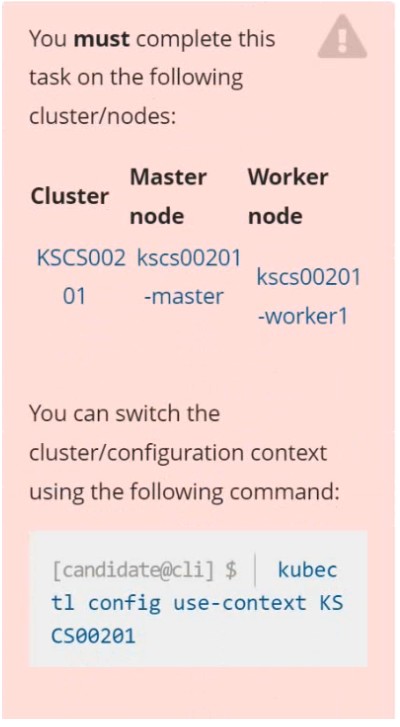
Context
A CIS Benchmark tool was run against the kubeadm-created cluster and found multiple issues that must be addressed immediately.
Task
Fix all issues via configuration and restart the affected components to ensure the new settings take effect.
Fix all of the following violations that were found against the API server:
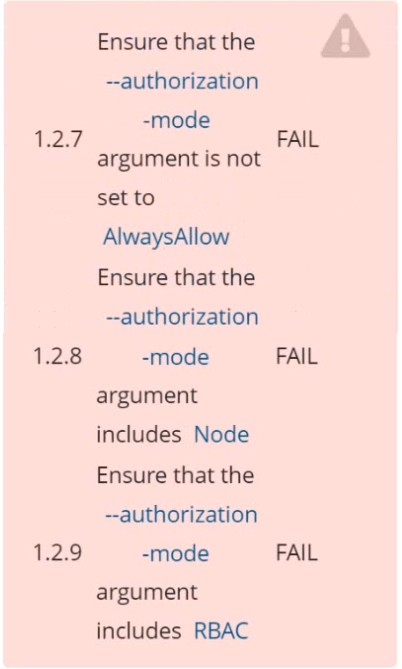
Fix all of the following violations that were found against the Kubelet:
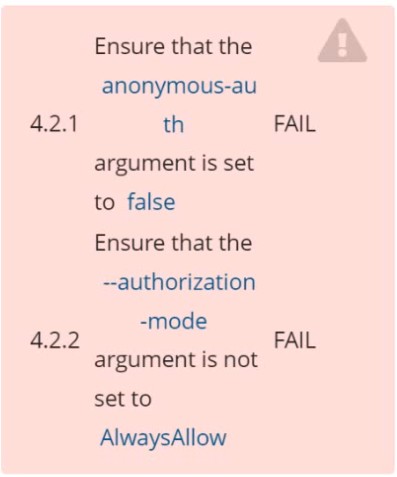
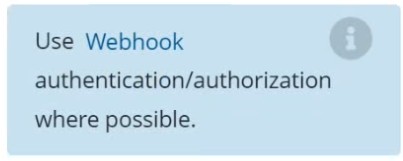
Fix all of the following violations that were found against etcd:
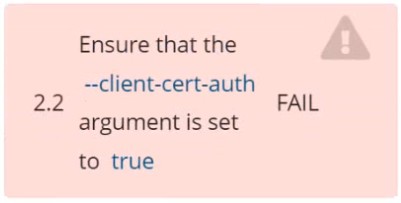
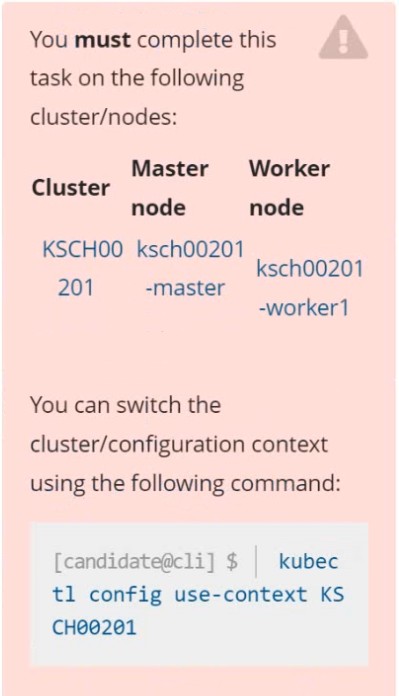
Context
A Role bound to a Pod's ServiceAccount grants overly permissive permissions. Complete the following tasks to reduce the set of permissions.
Task
Given an existing Pod named web-pod running in the namespace security.
Edit the existing Role bound to the Pod's ServiceAccount sa-dev-1 to only allow performing watch operations, only on resources of type services.
Create a new Role named role-2 in the namespace security, which only allows performing update
operations, only on resources of type namespaces.
Create a new RoleBinding named role-2-binding binding the newly created Role to the Pod's ServiceAccount.

Create a RuntimeClass named untrusted using the prepared runtime handler named runsc.
Create a Pods of image alpine:3.13.2 in the Namespace default to run on the gVisor runtime class.
Service is running on port 389 inside the system, find the process-id of the process, and stores the names of all the open-files inside the /candidate/KH77539/files.txt, and also delete the binary.
On the Cluster worker node, enforce the prepared AppArmor profile
#include
Â
profile nginx-deny flags=(attach_disconnected) {
 #include
Â
 file,
Â
 # Deny all file writes.
 deny /** w,
}
EOF'
Edit the prepared manifest file to include the AppArmor profile.
apiVersion: v1
kind: Pod
metadata:
 name: apparmor-pod
spec:
 containers:
 - name: apparmor-pod
  image: nginx
Finally, apply the manifests files and create the Pod specified on it.
Verify: Try to make a file inside the directory which is restricted.



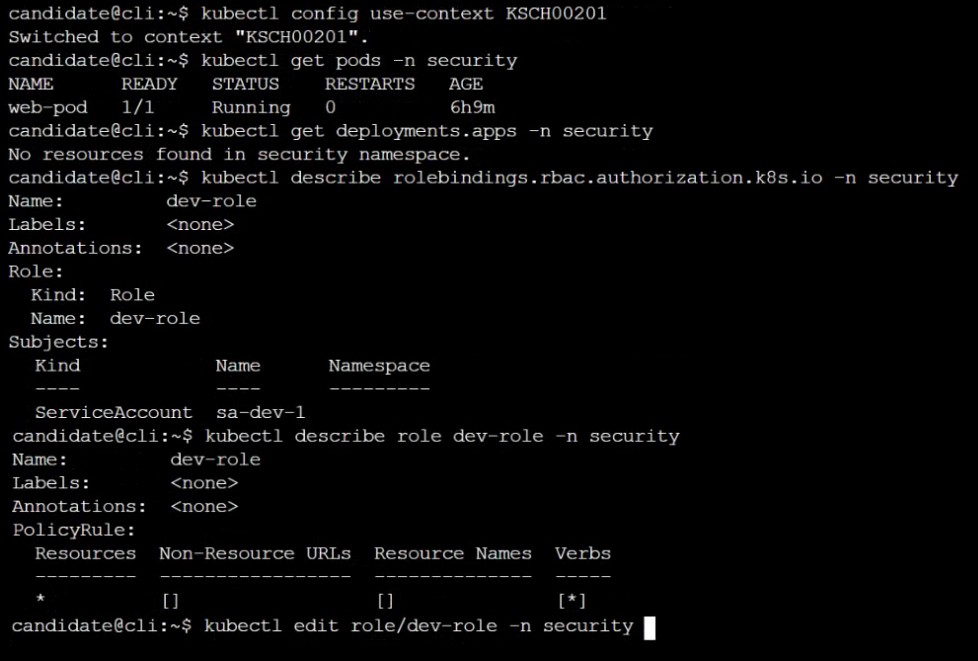 Text
Description automatically generated
Text
Description automatically generated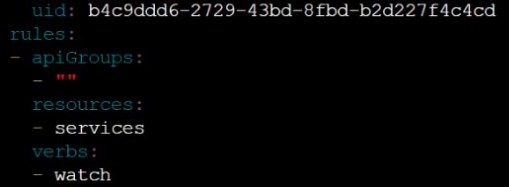 Text
Description automatically generated
Text
Description automatically generated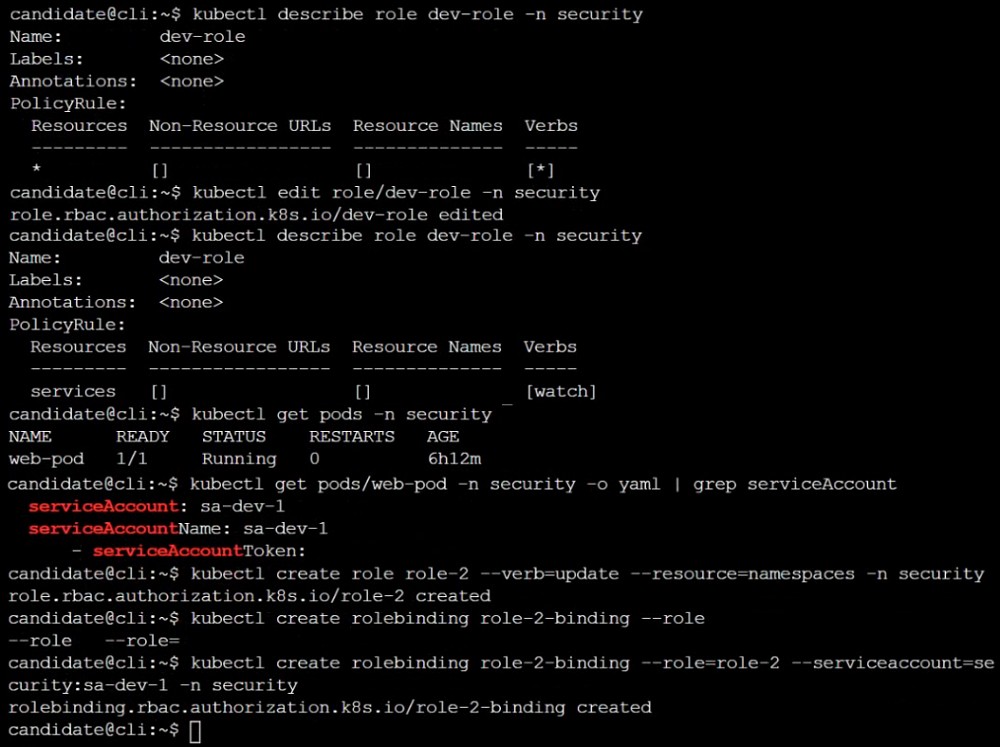 Text
Description automatically generated
Text
Description automatically generated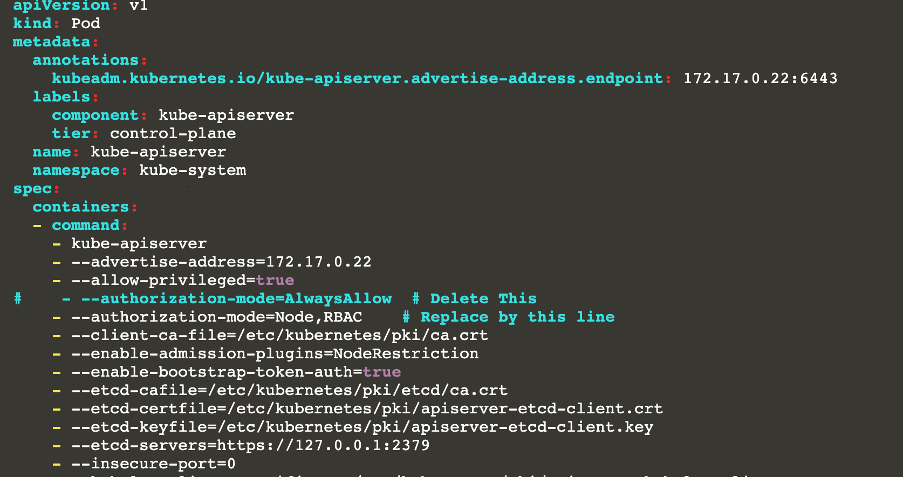 Text
Description automatically generated
Text
Description automatically generated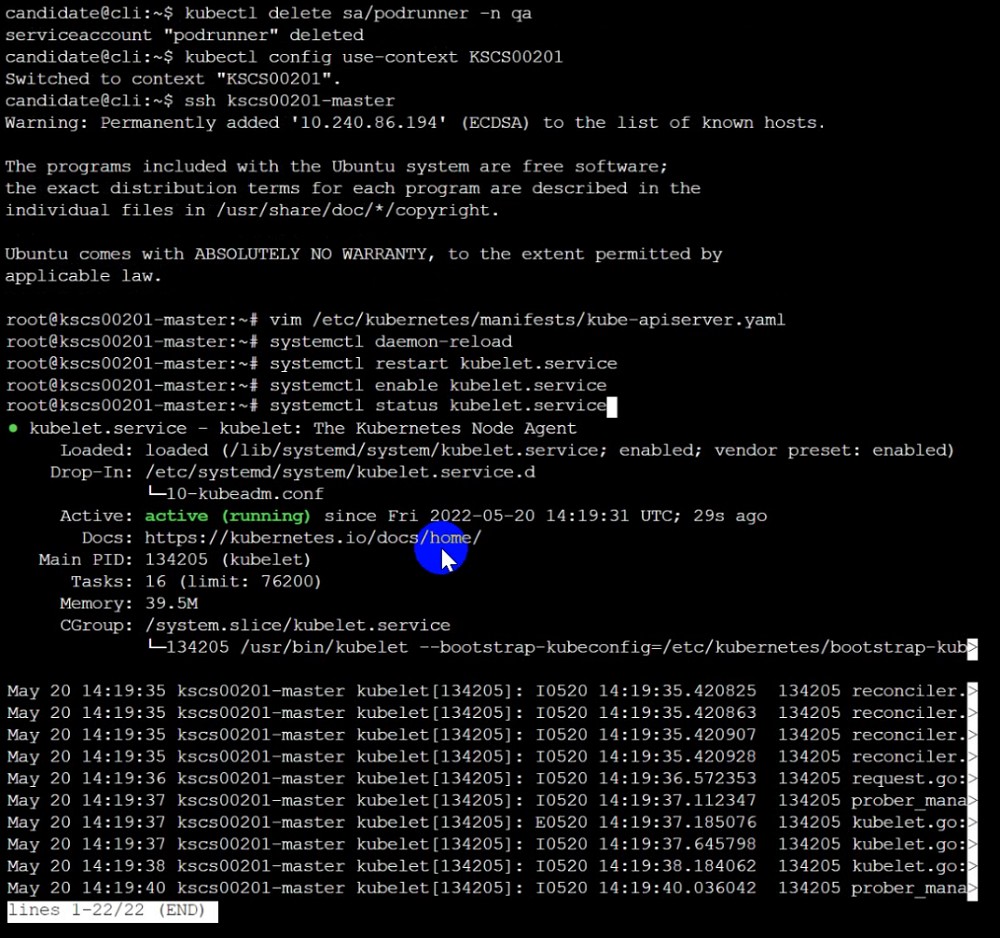
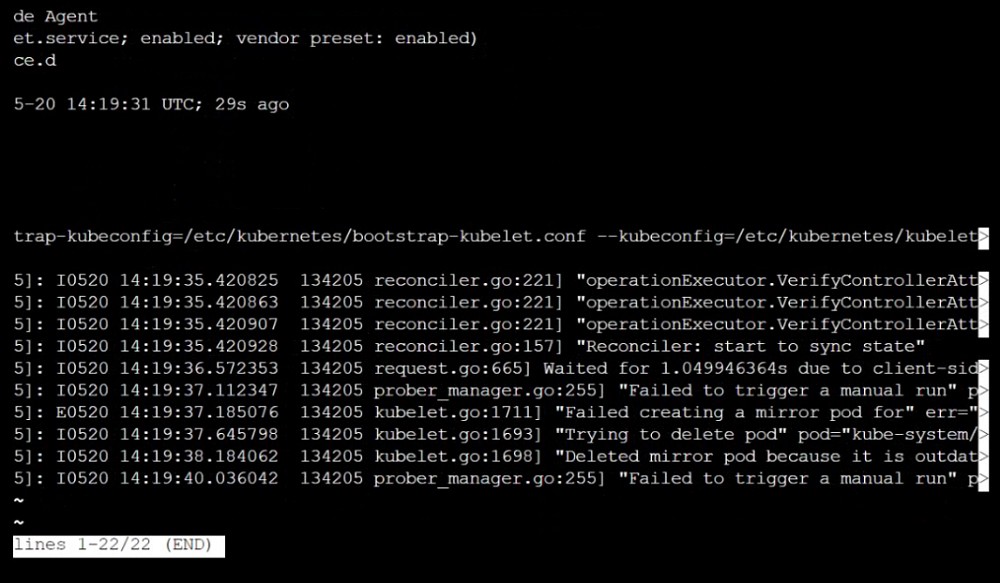
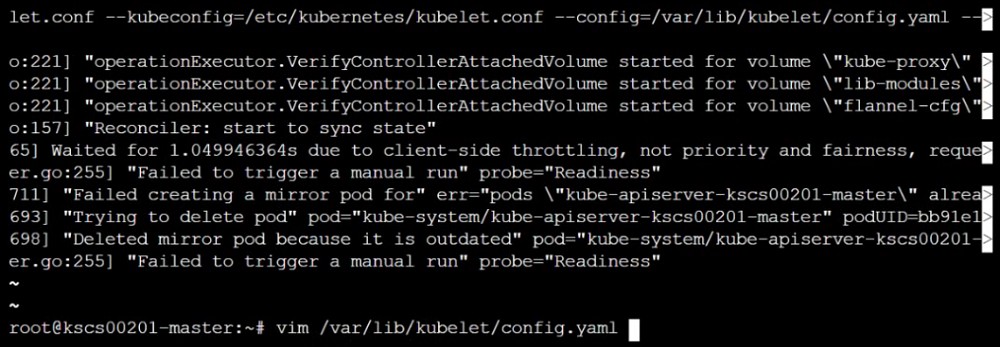
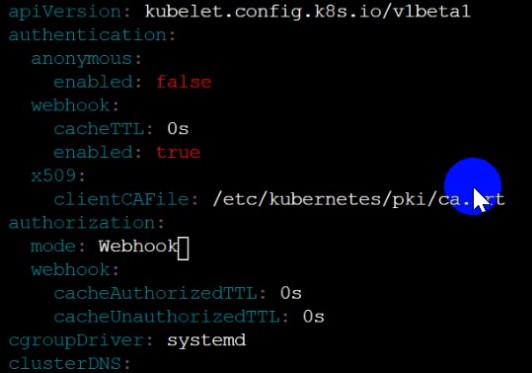 Text
Description automatically generated
Text
Description automatically generated Text
Description automatically generated
Text
Description automatically generated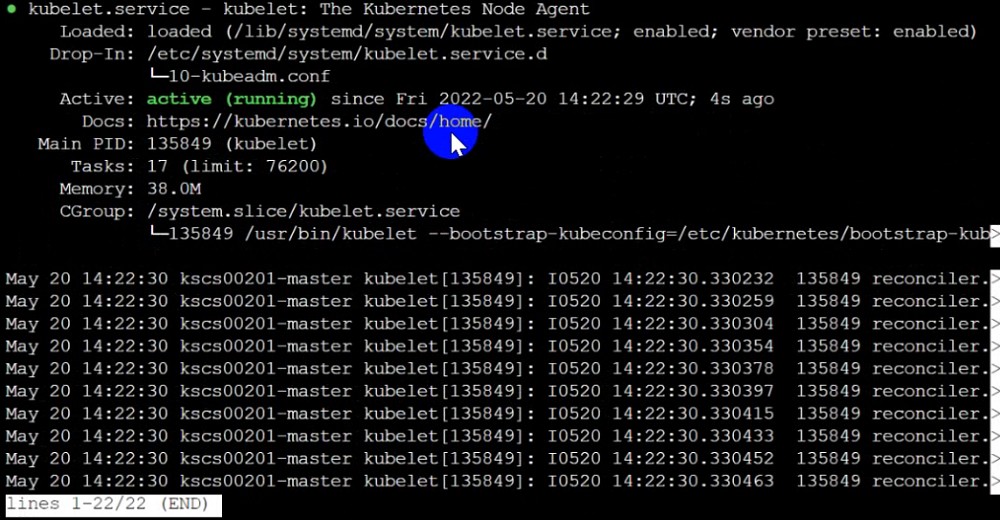
 Text
Description automatically generated
Text
Description automatically generated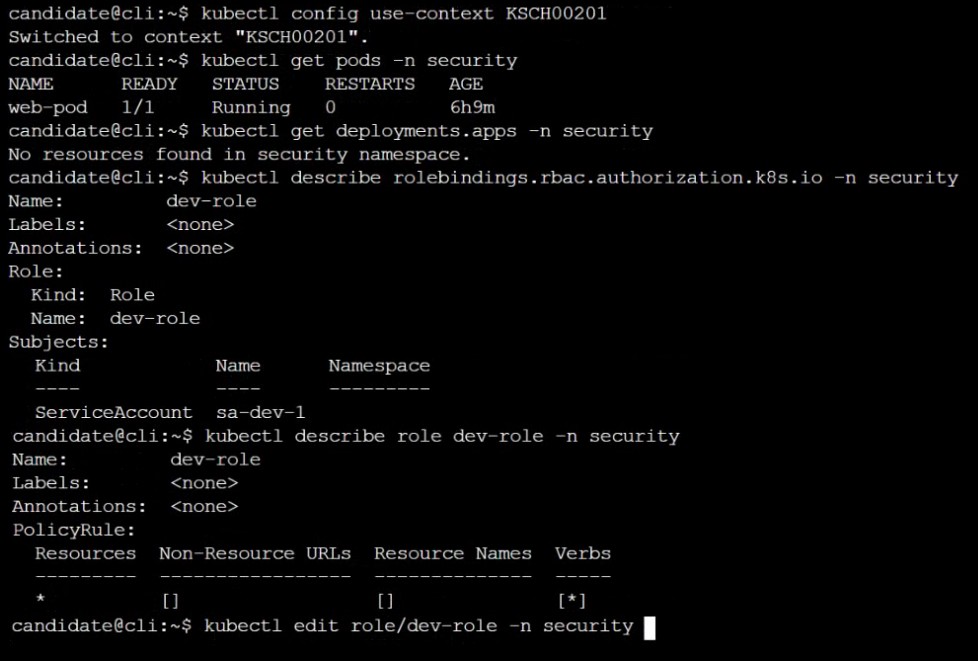 Text
Description automatically generated
Text
Description automatically generated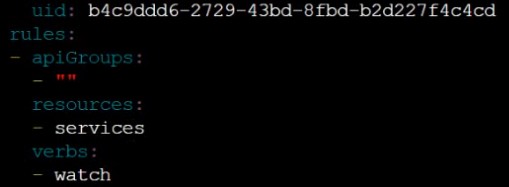 Text
Description automatically generated
Text
Description automatically generated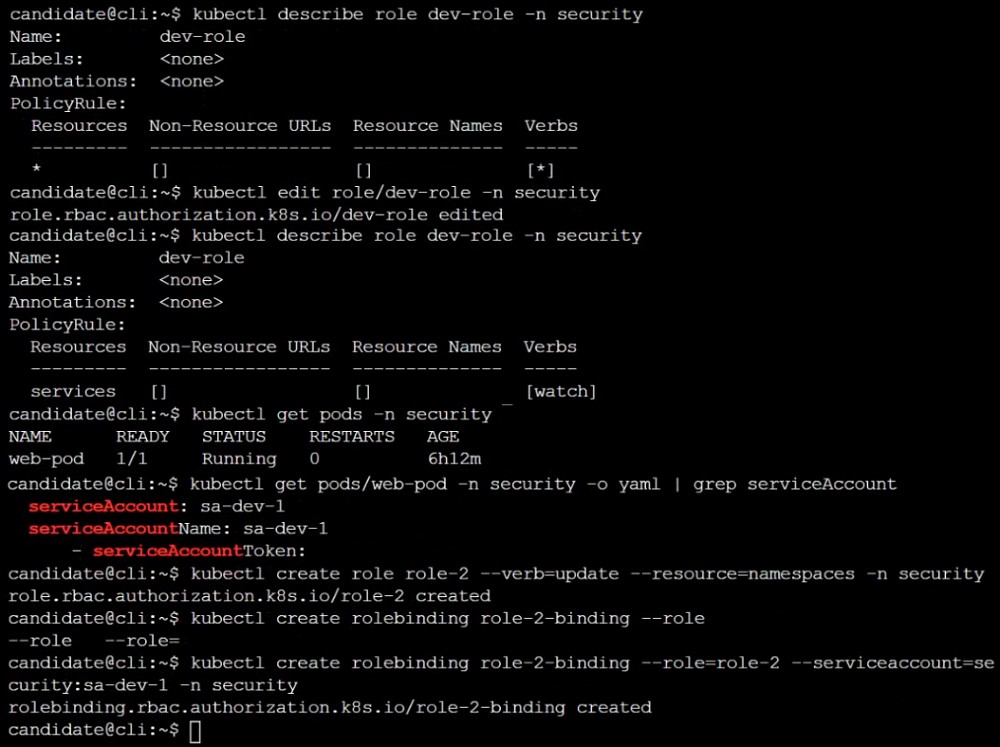 Text
Description automatically generated
Text
Description automatically generated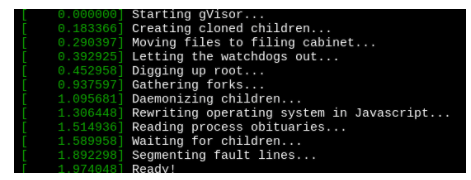 Text
Description automatically generated
Text
Description automatically generated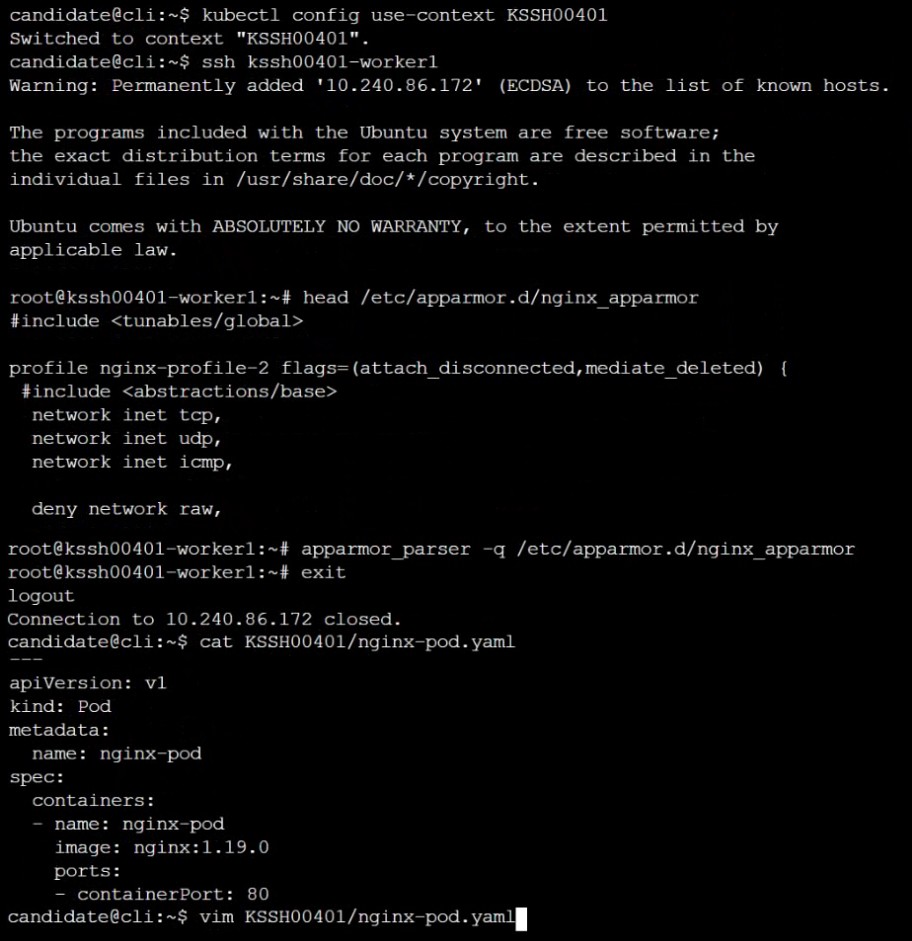 Text
Description automatically generated
Text
Description automatically generated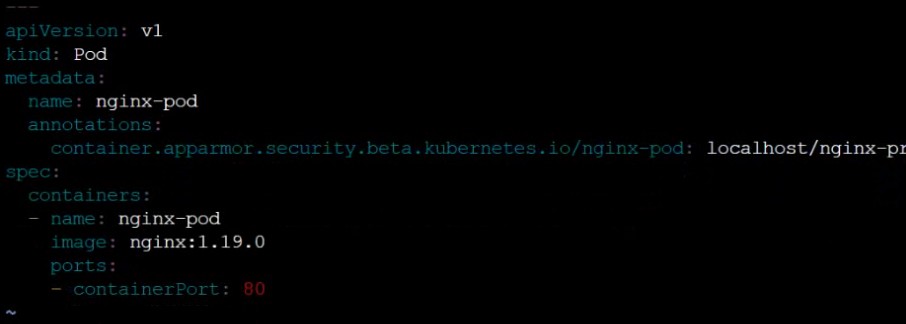 Text
Description automatically generated
Text
Description automatically generated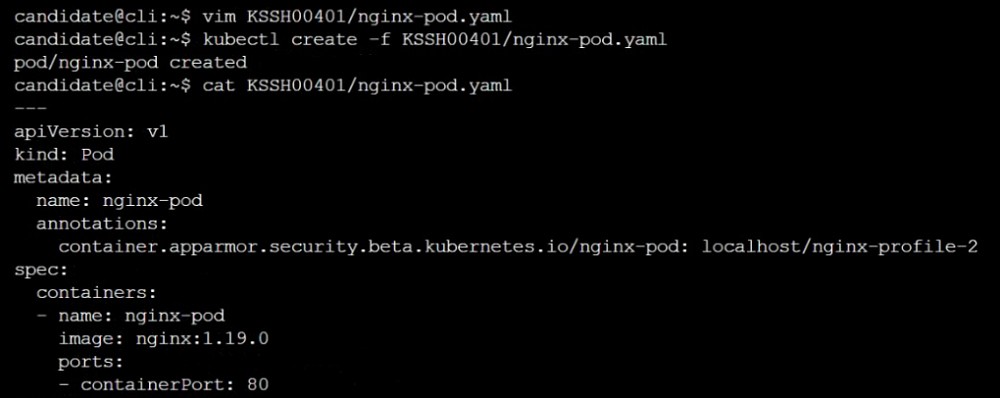 Text
Description automatically generated
Text
Description automatically generated